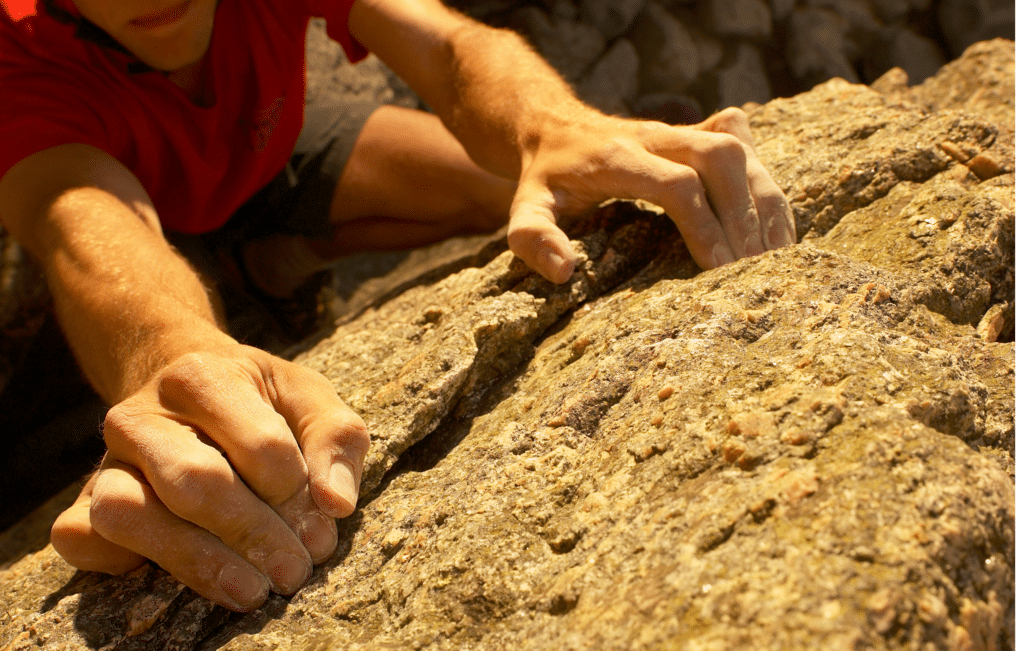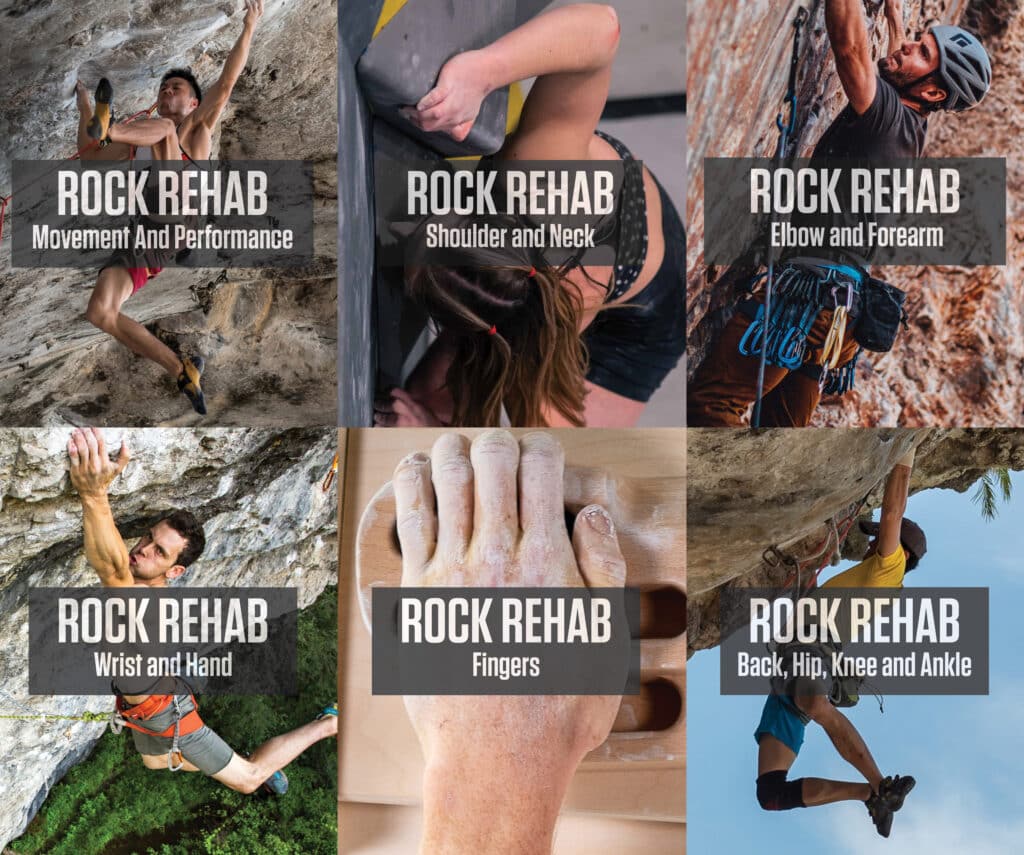How To: Find Physical Therapists with a Specialization in Rock Climbing
Injuries suck. They hurt, they require a lot of attention, and they keep you from doing what you love. If what you love to do is climbing and you’re dealing with or have dealt with an injury before, I’d like to make it easier for you to search for and pick a Physical Therapist (PT) who knows about rock climbing specific injuries and how to treat them, so you can get back to doing what you love quicker.
Navigating the world of healthcare can be really intimidating and confusing. With rock climbing being as specialized as it is, you might run into the dilemma of your healthcare provider not having a good understanding of the sport and all of its demands. I want to give you some key information to help demystify this process: how to find PT’s for rock-climbing injuries, what payment options there are, and what your treatment will look like.

In-Person or Remote?
First, consider what type of session you’d like: in-person, or telehealth. Both can provide you with the tools you need to get back to climbing, but you should consider what aligns best with what exactly you are looking for. Then, consider the area you live in. Are you in an area with a high concentration of climbers? If so, you are likely to be able to find a PT that is a reasonable distance from you. If not, I would consider telehealth as being your best bet.
Paying for Climbing-Specific PTs
There are two main options you have when it comes to payment for physical therapy. One is through insurance, and the other is through what is called “cash pay.” Many of the PTs who are in a smaller business or who only treat climbers will often utilize the cash pay method where you pay a predetermined session rate. These providers (PTs) will often use this option because insurance can be very difficult to work with and may not allow you a long enough session or sessions to be treated in the most effective way. But this option may also be too costly for some people. Going through insurance, you will often have two options: an out-of-network provider or an in-network provider. Out-of-network means that provider does not accept your insurance plan, so you will have to pay the out-of-network fees dictated by your insurance. In-network means that the provider does accept your insurance plan and the fee you pay will likely be less. But oftentimes insurance has certain rules that may dictate your care and restrict what treatments you are and aren’t able to have covered from your PT.
What will PT be like?
First, it starts off with a conversation. You will be asked specific questions to see exactly what you are dealing with and your goals so the PT can better understand how to help. Then, the PT will perform an examination, checking your movement, strengths, weaknesses, areas that are causing you pain, and much more. Based off of the gathered information, the PT will develop an individualized plan for your care to optimize your mobility, strength and movement to get you back to climbing injury-free.
What Should You Look For?
When looking for a physical therapist, especially if you’re a climber or someone with specific needs, it’s important to consider several key characteristics. It’s rare that your therapist will satisfy all of the criteria below, but helpful if they can check several of the boxes. Here are eight traits to look for:
- Specialization in Orthopedic Clinical Specialist (OCS) or Sports Clinical Specialist (SCS): This indicates advanced knowledge and experience in orthopedic or sports-related injuries and treatments, which is crucial for addressing specific physical issues effectively.
- Experience in Teaching at a University Level: A physical therapist with a background in teaching often has a deeper understanding of the theoretical aspects of physical therapy and stays updated with the latest practices and research in the field.
- Experience Working with Climbers: A therapist who has worked with climbers will have a better understanding of the unique challenges and injuries common in this sport, making them more adept at creating effective treatment plans for climbers.
- Completion of Climbing-Specific Continuing Education Courses: This shows that the therapist has taken the initiative to learn about the specific needs and challenges faced by climbers, further enhancing their ability to provide specialized care. Click here or the image below for examples of climbing injury courses.
- Strong Communication Skills: Effective communication is essential for understanding a patient’s concerns, explaining treatment plans, and ensuring that exercises are performed correctly for optimal recovery.
- Patient-Centered Approach: A therapist who focuses on individualized treatment plans and takes into account the patient’s specific goals, preferences, and lifestyle will likely provide more effective and personalized care.
- They Are a Climber Themselves: Having personal experience in climbing allows the therapist to have a deeper understanding and empathy for the specific physical demands and challenges faced by climbers, making their guidance and treatment plans more relevant and effective.
- Contributions to Climbing Research: The physical therapist has been actively involved in research related to climbing, indicating a commitment to advancing knowledge and best practices in this specific area. This involvement can provide insights into the latest techniques and understandings in the field, beneficial for climbers seeking specialized care.
Possessing several of these characteristics ensure that the physical therapist is not only highly qualified but also well-equipped to understand and meet the specific needs of climbers or patients with similar demands.
How Do I Dig Deeper?
Once you’ve identified a physical therapist who aligns with the characteristics important for a climber, it’s wise to delve deeper to ensure they’re the right fit for your needs. Start by looking up online reviews and testimonials, which can provide real-world insights into their effectiveness and climber satisfaction. Don’t hesitate to call their office to inquire about their specific experience with climbing-related injuries and their approach to treatment. This conversation can also give you a sense of their communication style and how they engage with patients. Additionally, reaching out to your climbing community, including friends and acquaintances who have similar physical therapy needs, can be invaluable. They might offer firsthand referrals or share their experiences, both positive and negative. This thorough approach helps ensure that the physical therapist you choose is not only qualified on paper but also in practice, with a proven track record of success and a patient care style that resonates with your personal needs and expectations.
Now What?
If you still are having trouble finding a climbing PT and you would like to find medical providers who treat climbers in your geographic region, see the below link at the bottom under “Click Here to See a List of All Accepted Members” It is not possible to vouch for their clinical expertise aside from they are medical providers who climb and are a part of the Rock Rehab Community, but they may be worthwhile to reach out to and you can identify how many of the eight traits they posses and dig deeper into your search by checking their reviews, calling their office, and vetting them through other climber referrals.
About The Author
Liana Aguirre-Echevarria is a physical therapy student at the University of Colorado in Denver, Colorado. She is passionate about climbing and physical therapy.
- Disclaimer – The content here is designed for information & education purposes only and the content is not intended for medical advice.






